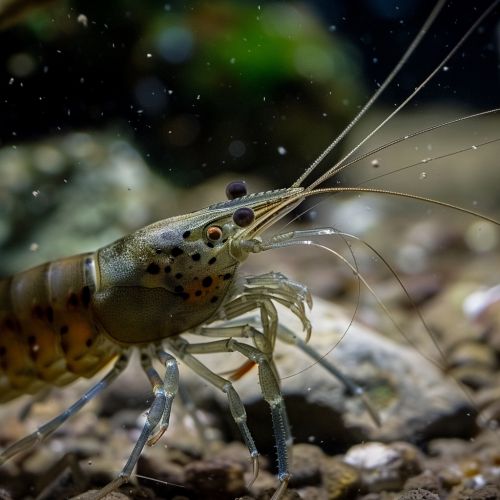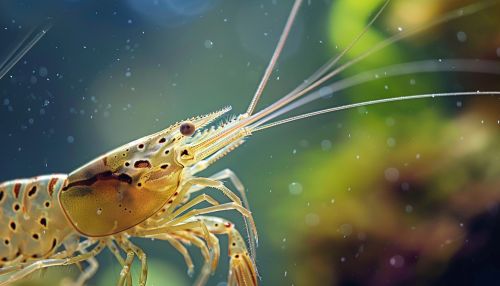Shrimps
Introduction
Shrimps are small, decapod crustaceans found in both saltwater and freshwater environments. They belong to the order Decapoda, which also includes crabs, lobsters, and prawns. Shrimps are an important part of the aquatic food chain and are widely consumed by humans. This article delves into the biology, ecology, and economic significance of shrimps, providing a comprehensive overview for those interested in marine biology and aquaculture.
Taxonomy and Classification
Shrimps are classified under the phylum Arthropoda, subphylum Crustacea, and order Decapoda. Within Decapoda, shrimps are further divided into several families, including Caridea and Dendrobranchiata. The distinction between shrimps and prawns is often blurred, but generally, prawns belong to the suborder Dendrobranchiata, while shrimps belong to the suborder Caridea.
Anatomy and Physiology
Shrimps possess a segmented body divided into the cephalothorax and abdomen. The cephalothorax is covered by a protective carapace, while the abdomen is flexible and aids in swimming. Shrimps have five pairs of legs, with the first pair often modified into claws or chelae. Their gills are located within the carapace, facilitating respiration.


Shrimps exhibit a range of sensory adaptations, including compound eyes and long antennae, which help them navigate their environment and detect predators and prey. Their nervous system is decentralized, with a ventral nerve cord and ganglia controlling various functions.
Habitat and Distribution
Shrimps inhabit a wide range of environments, from shallow coastal waters to deep-sea hydrothermal vents. They are found in both marine and freshwater ecosystems, with some species adapted to brackish waters. Shrimps are particularly abundant in coral reefs, estuaries, and mangrove forests, where they play a crucial role in nutrient cycling and energy transfer.
Reproduction and Life Cycle
Shrimps exhibit diverse reproductive strategies, including both sexual and asexual reproduction. Most species are dioecious, with separate male and female individuals. Fertilization is typically external, with females carrying fertilized eggs on their pleopods until they hatch into larvae. The larval stages include nauplius, zoea, and mysis, each characterized by distinct morphological changes.
Feeding and Diet
Shrimps are omnivorous, feeding on a variety of organic matter, including algae, plankton, detritus, and small invertebrates. Their feeding habits contribute to the health of aquatic ecosystems by recycling nutrients and controlling the populations of other organisms. Some species are filter feeders, using specialized appendages to capture suspended particles from the water column.
Ecological Role
Shrimps play a vital role in aquatic ecosystems as both prey and predators. They are a key food source for many larger animals, including fish, birds, and marine mammals. By consuming detritus and other organic matter, shrimps help maintain water quality and support the productivity of their habitats.
Economic Importance
Shrimps are one of the most economically valuable seafood commodities worldwide. They are harvested through both wild capture and aquaculture, with major producers including China, Thailand, Indonesia, and India. The global shrimp industry faces challenges such as overfishing, habitat destruction, and disease outbreaks, prompting efforts to develop sustainable practices.
Conservation and Management
The conservation of shrimp populations involves a combination of regulatory measures, habitat protection, and research. Marine protected areas (MPAs) and no-take zones help safeguard critical habitats, while fisheries management practices aim to prevent overexploitation. Advances in aquaculture technology also contribute to the sustainable production of shrimps, reducing pressure on wild stocks.
